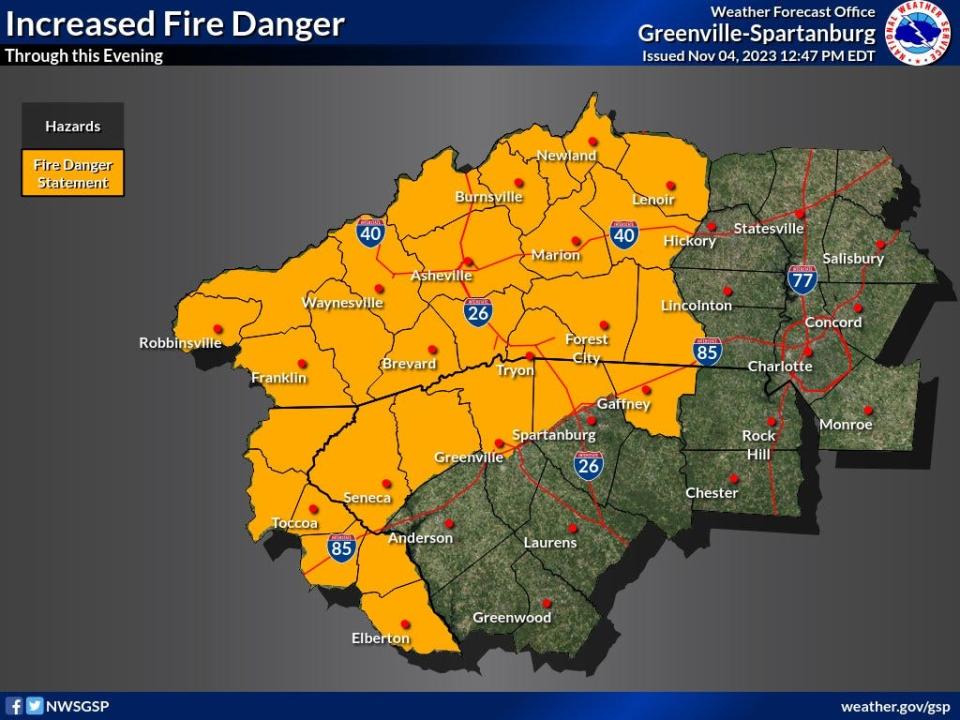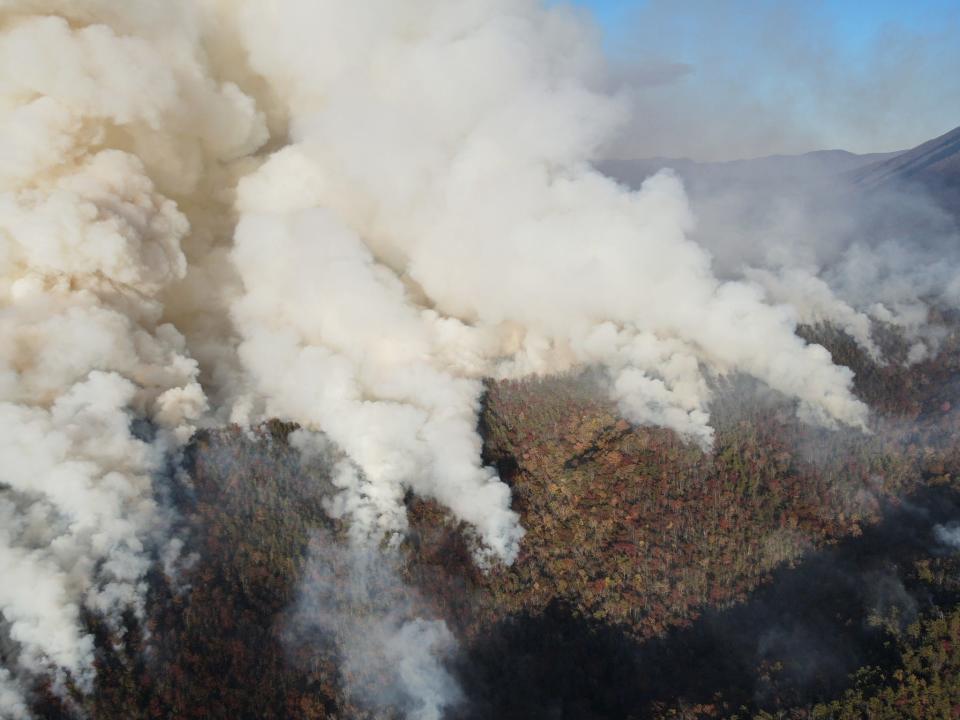Open burning is banned in Buncombe County until further notice; rain not expected for days
ASHEVILLE - The Buncombe County Fire Marshal’s Office has issued a ban on open burning for all of Buncombe County due to excessively dry, windy conditions and wildfires grow across Western North Carolina.
The burn ban went into effect at 9 a.m. Nov. 5, in accordance with North Carolina State Building Code: Fire Prevention Code 307.1, and the Buncombe County Fire Prevention Ordinance, according to a news release, which cited "adverse atmospheric conditions. Those conditions include high fire danger, low humidity, and strong gusty winds."
The burning of yard waste, debris, or land clearing burns is prohibited during this ban. It is never legal to burn anything other than naturally occurring vegetation. This ban does not include fires contained in a pit, barbecue grill, or chiminea device smaller than 3 feet in diameter, according to the news release.

The burning ban will be in effect until conditions improve and the ban is canceled.
Tipton had issued a burn ban last week that expired Nov. 3.
Ashley Rehnberg, a meteorologist with the National Weather Service based in Greer, South Carolina, told the Citizen Times Nov. 5 that the next chance for rain will be later this week.
"A cold front is going to move through late Thursday and Friday. That's going to increase rain chances from west to east late in the day Thursday, so mainly Thursday night and Friday was the best chance," Rehnberg said.
Buncombe County is in moderate to severe drought, with Henderson County experiencing severe drought, she said. The chance of rain later this week is not expected to help conditions.
"(Expected rain) is looking fairly light. We're not expecting a drought busting rainfall. We're expecting less than an inch, for most locations (in Western North Carolina) and a 10th of an inch outside of the mountains, if we're lucky," Rehnberg said.
Driving the parkway 'Shocked' Blue Ridge Parkway traveler recounts seeing visitors 'inches' from black bear
Last fall color: Where to go to catch last of Western North Carolina's leaf season: 2023 fall foliage
Since Jan. 1, Asheville is 11.12 inches of precipitation below normal. The city normally receives 42.15 inches of precipitation for the entire year, she said. Since Sept. 1, Asheville is 7.96 inches below normal.
In Henderson County, the Poplar Drive Fire burning in the Edneyville community is 250 acres and 5% contained, according to the North Carolina Forest Service. As of Nov. 5 it had destroyed two homes and damaged part of another.
The Collett Ridge Fire, which began from a lightning strike Oct. 23 in the Cherokee County area of Nantahala National Forest, is at 2,158 acres as of the morning of Nov. 6 and is not contained, according to the U.S. Forest Service.
Some 110 personnel from the U.S. Forest Service and North Carolina Forest Service are fighting the fire, which grew more than three times its size from Nov. 4.
The Rim Trail is temporarily closed for approximately 7 miles from Big Stump to Shinbone. There are no road or area closures at this time however, the N.C. Forest Service said in a Nov. 6 news release, the public should avoid the area so fire crews and resources can work safely.
More: Wildfire in Nantahala National Forest spreads: 677 acres, no containment

On Nov. 4, the National Weather Service in Greenville-Spartanburg posted to its social media accounts that the warm, dry air mass, "along with dry vegetation & leaf litter, will enhance the potential for wildfires to spread quickly" in the WNC mountains, the northern South Carolina Upstate and northeast Georgia."
The NWS also reminded people that on Nov. 4, 2016, extended drought conditions across WNC contributed to 34 wildfires that burned throughout November, eventually burning some 60,000 acres of forest. They also led to 14 deaths in Gatlinburg, Tennessee, after the Chimney Tops Fire that started in Great Smoky Mountains National Park raged outside the park's borders.
More: Low pay, turnover strain North Carolina Forest Service firefighters
More: Hunters find human remains in Pisgah National Forest, FBI investigating
Karen Chávez is Executive Editor for the Asheville Citizen Times, part of the USA TODAY Network. Tips, comments, questions? Call 828-236-8980, email, KChavez@CitizenTimes.com or follow on Twitter @KarenChavezACT.
This article originally appeared on Asheville Citizen Times: Buncombe County bans open burning; wildfires grow across Western NC

